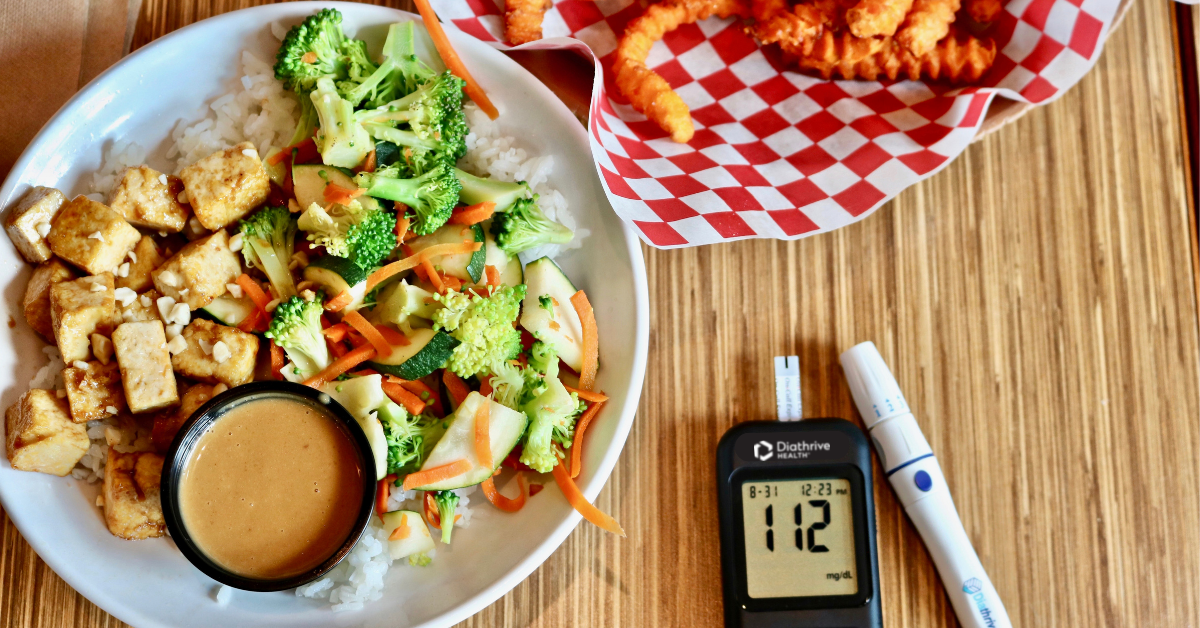
A diabetes educator clarifies information and myths about carbohydrates. Here are her 3 steps to help you manage your carb intake.
So, you have recently been diagnosed with diabetes. Somehow, everyone becomes an expert and begins telling you that carbohydrates (carbs) are the devil and that they ‘should be avoided'. At least that is what you think you heard.
I am here to clarify some information, dispel some myths, and hopefully make your life with diabetes a bit easier.
Human physiology has not changed in 10,000 years or so. The food we eat, whether we hunt for it, forage, buy, or prepare it, is digested into molecules your body needs for fuel. The primary fuel your body produces is (drumroll….) GLUCOSE. There is nothing wrong with this. It's our fuel and it's how we roll. The brain and central nervous system utilize glucose without the requirement of insulin to make it available. The rest of the body burns glucose too but needs insulin present to let it into the cells.
We are very efficient mammals. We can create glucose out of ANY kind of macronutrient; protein, fat, carbs. Carbohydrates convert to glucose with 90-100% efficiency because this is what they are supposed to do. Therefore, carbs (sugars, starches, fibers) can affect blood glucose values fast and furious. Remember, protein and fat CAN convert to glucose as well but it is not their primary function. When they do have to convert, it is a slow, inefficient process and not without potential consequences.
Carbs are not the devil. Some of the highest nutrient-dense foods are complex carbs that grow on earth.
Here are 3 steps to managing your carb intake for optimal energy and blood sugar management.
Identify
We have to speak the same language. What kind of foods count as carbs? Anything that comes from a grain (barley, rye, oats, wheat, spelt, quinoa), all fruit, milk, yogurt, desserts (even if it is sugar-free, it does NOT mean carb-free), beans, legumes and starchy vegetables such as peas, potatoes, corn, and winter squash.
ALL of these foods can fit into a healthy meal plan. Look at your plate and identify your carb sources. Point them out, "yep, yep, nope". Just identify.
Quantify
This is where most people get lost.
4 quarters equals $1.00, right? A standard serving of a carb source has a carb count. A serving is not a portion. Please re-read that.
For example: a ⅓ cup serving of rice has about 15g of carbs. One scoop of rice on your plate may very well be 4 times that quantity. Therefore, your rice could be 60g, not the 15g in the carb apps or books. Check the serving size, know the actual quantity on the plate, and do the math!
Quality
Better quality means more complex carbs that digest slower and keep you fuller longer. The hack here comes down to intact, unadulterated fiber content...ie. carbs that grow on Earth (beans, legumes, vegetables, whole grains, and fruits with peels if possible). The higher the natural fiber, the lower the glycemic effect because the fiber slows down digestion and absorption. You will still need to quantify so watch the portions.
So before you decide that carbs are the devil, remember to make sure you know what to count as carbs, be accountable for the amount you are actually eating, and choose the highest quality you can afford. Those 3 simple steps will always get you back on track when the nutrition messages begin to blur.

